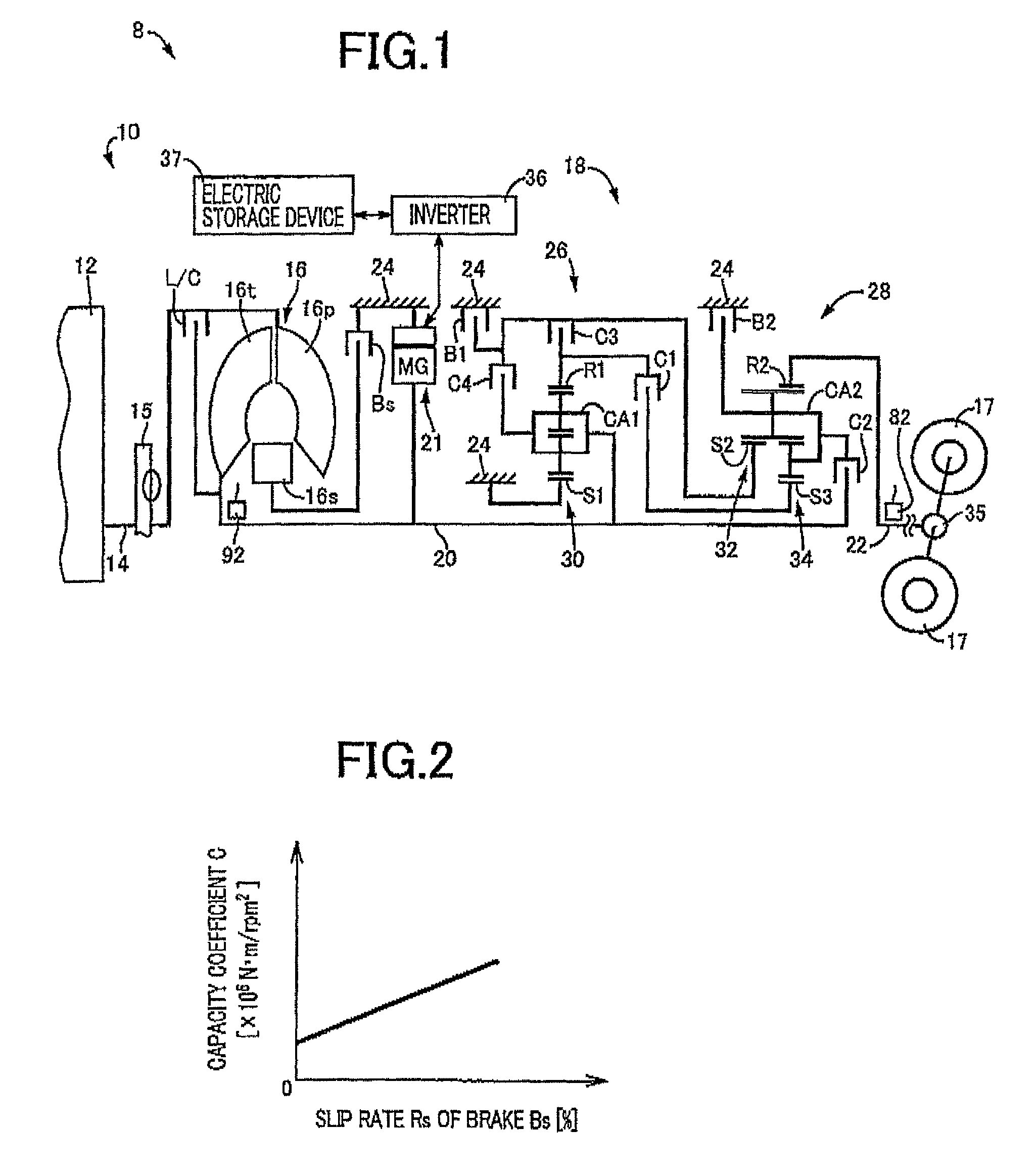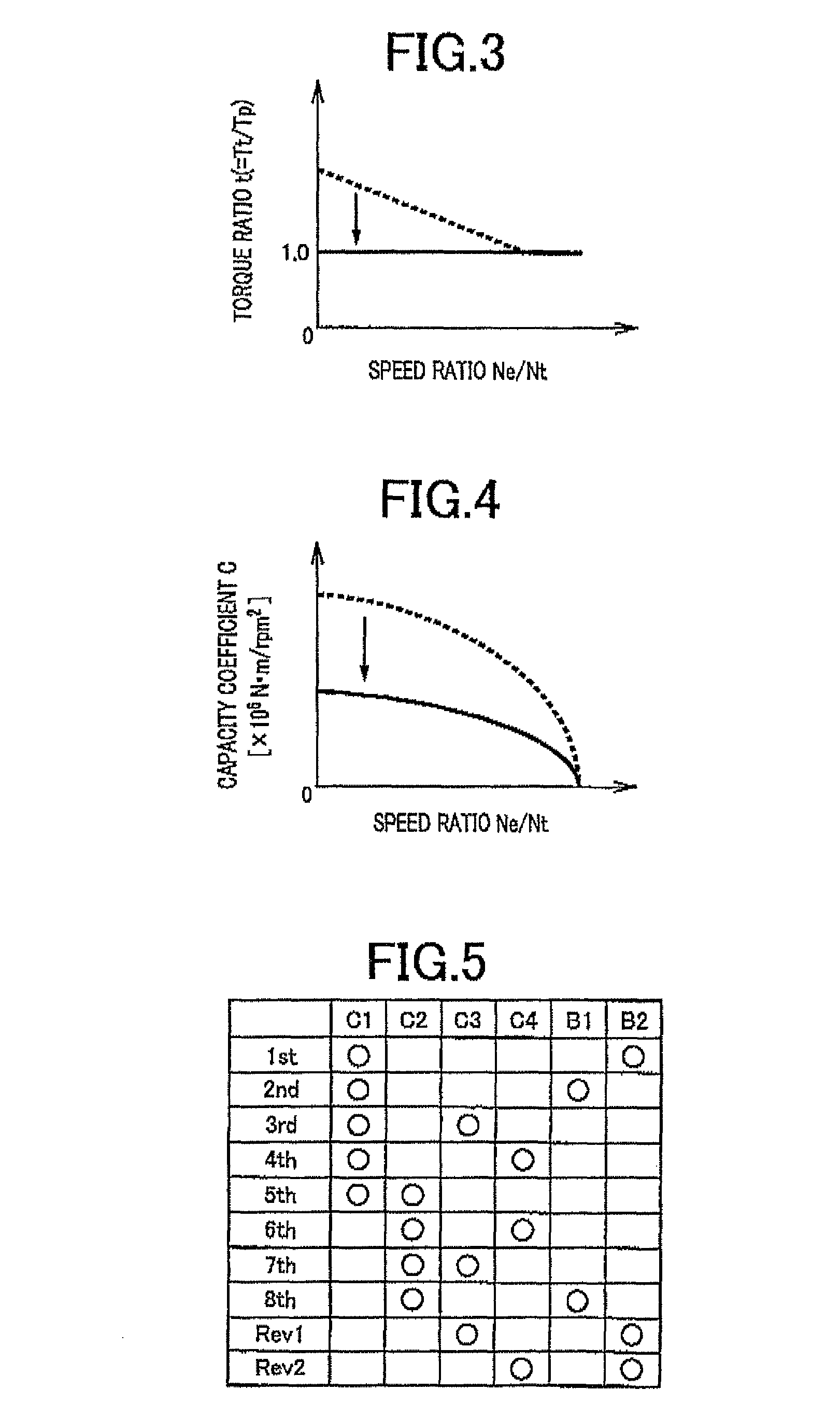Vehicle engine start control device
a technology of start control device and vehicle engine, which is applied in the direction of electrical control, hybrid vehicles, instruments, etc., can solve the problems of inability to rapidly raise the engine rotation speed, passengers may feel discomfort, and the engine starting shock can be reduced, and the engine startability is favorable, and the effect of rapid and sure starting
- Summary
- Abstract
- Description
- Claims
- Application Information
AI Technical Summary
Benefits of technology
Problems solved by technology
Method used
Image
Examples
first embodiment
[0045]FIG. 1 is a schematic for explaining a configuration of a vehicle drive device 10 included in a vehicle 8 to which the present invention is applied. In FIG. 1, the vehicle drive device 10 is preferably employed in FR (front-engine rear-drive) type vehicles and includes an engine 12 that is an internal-combustion engine, a torque converter 16 that is a hydraulic power transmission device coupled to a crankshaft 14 of the engine 12, an automatic transmission 18 disposed between the torque converter 16 and drive wheels 17 and coupled to the torque converter 16, and an electric motor 21 for running disposed between the torque converter 16 and the automatic transmission 18 and coupled to an input shaft 20 (transmission input shaft 20) of the automatic transmission 18. In the vehicle drive device 10 configured as described above, the power of the engine 12 is transmitted from the crankshaft 14 of the engine 12 sequentially through the torque converter 16, the automatic transmission ...
second embodiment
[0123]FIG. 16 is a schematic for explaining a configuration of a vehicle drive device 308 included in a vehicle 306 of a second embodiment that is another embodiment of the present invention. The vehicle drive device 308 includes the engine 12 and a vehicle power transmission device 310 (hereinafter referred to as the “power transmission device 310”) interposed between the engine 12 and the drive wheels 17, and is preferably used for hybrid vehicles. In FIG. 16, the power transmission device 310 includes, in series, an input shaft 314 disposed on a common axial center in a transmission case 312 (hereinafter, referred to as the “case 312”) that is a non-rotating member attached to a vehicle body; a differential portion 311 as a continuously variable transmission portion coupled to the input shaft 314; an automatic transmission portion 320 as a power transmitting portion serially coupled via a transmitting member 318 on a power transmission path between the differential portion 311 an...
third embodiment
[0167]This embodiment is basically the same as the first embodiment and, therefore, differences from the first embodiment will hereinafter be described.
[0168]Although the intake valve drive device 64 is mainly made up of the cam mechanism in the first embodiment, an intake valve drive device 464 of this embodiment is not mainly made up of the cam mechanism and includes an electromagnetic valve drive mechanism capable of applying an electromagnetic force to the intake valve 62 along the direction of the reciprocating movement of the intake valve 62. Therefore, the intake valve drive device 464 has a function as an intake valve opening / closing timing changing device changing the opening timing and the closing timing of the intake valve 62 independently of each other. The operating principle of an exhaust valve drive device 468 of this embodiment is the same as the intake valve drive device 464. Therefore, the exhaust valve drive device 468 has a function as an exhaust valve opening / cl...
PUM
 Login to View More
Login to View More Abstract
Description
Claims
Application Information
 Login to View More
Login to View More - R&D
- Intellectual Property
- Life Sciences
- Materials
- Tech Scout
- Unparalleled Data Quality
- Higher Quality Content
- 60% Fewer Hallucinations
Browse by: Latest US Patents, China's latest patents, Technical Efficacy Thesaurus, Application Domain, Technology Topic, Popular Technical Reports.
© 2025 PatSnap. All rights reserved.Legal|Privacy policy|Modern Slavery Act Transparency Statement|Sitemap|About US| Contact US: help@patsnap.com



